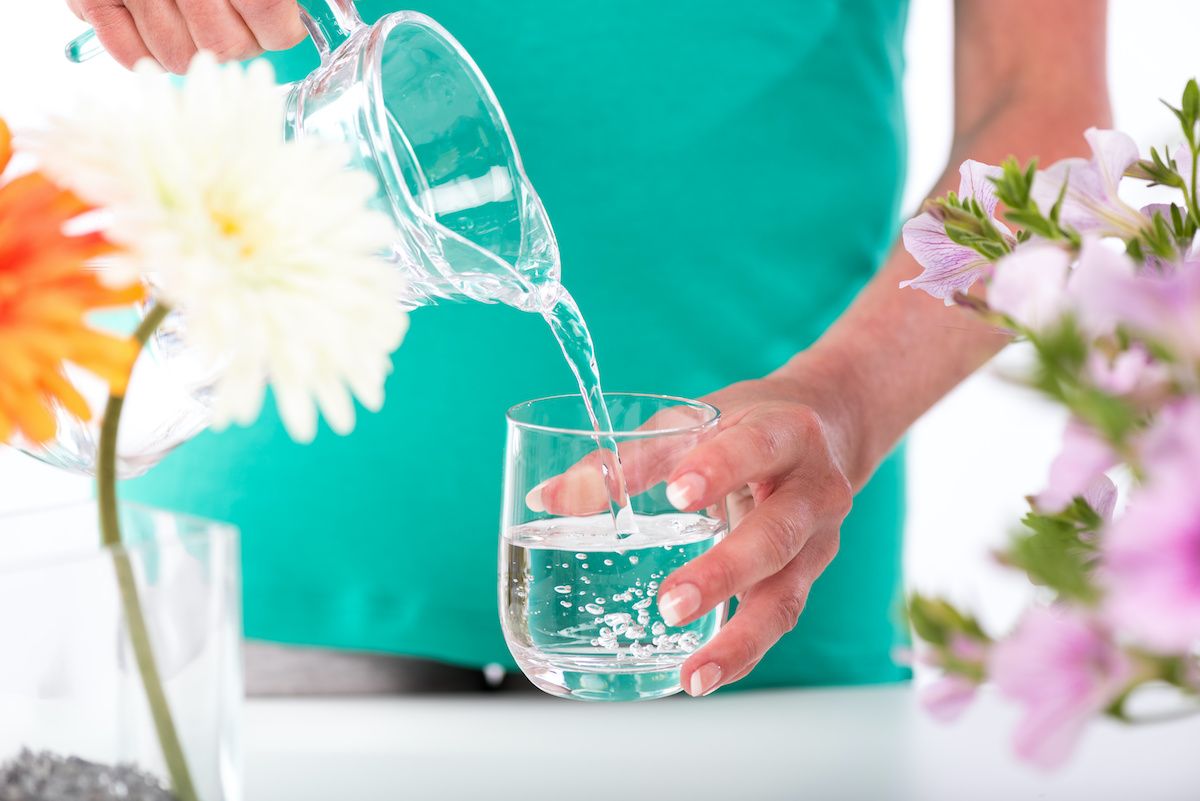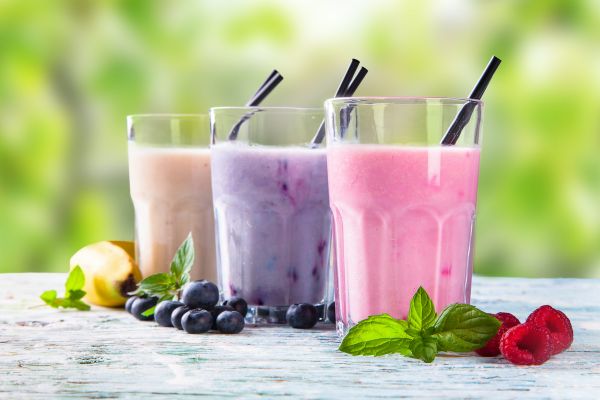Every day, we lose water when we breathe, perspire and rid our bodies of waste. At birth, our bodies were almost 80% water but that drops to about 50-60% in adulthood. Since muscle contains more water than fat, men tend to have higher percentage of water with 60% compared to women with 55%. After age 50, the percentage goes down to 55% for men and 47% for women. An average adult needs to drink about three quarts of water (96 ounces or about 12 glasses) each day to keep the body hydrated and working properly.
Dehydration occurs when you lose more fluids than you take in. Along with the water, you lose vital electrolytes such as sodium and potassium. Dehydration may result from a number of conditions that cause you to take in less fluid (such as nausea) or to lose too much fluid (from vomiting, diarrhea, sweating, or fever). Medications can also cause fluid and electrolyte loss.
What happens with dehydration?
Without the water your body needs, you are at risk for dehydration. Mild dehydration may not cause symptoms, but severe dehydration causes electrolyte imbalances that may be life-threatening.
Mild dehydration – loss of 5-6% of your body fluids: Symptoms such as dizziness, headache, fatigue and dry mouth may appear. Rehydrating by drinking water or an electrolyte drink (like some sports drinks) will usually correct the problem.
Moderate dehydration – loss of 7-10% of your body fluids: Blood pressure starts to drop and pulse gets faster. Skin gets dry and may “tent” (see symptoms). Urination is decreased in amount and frequency. Rehydration and electrolyte replacement must be done right away. If no electrolyte fluid is available, plain water is OK.
Severe dehydration – loss of more than 10% of your body fluids: Severe dehydration can cause dizziness, fainting and worse. Low electrolytes can cause seizures. Dehydration at this level requires immediate medical attention. You will likely need IV hydration and electrolyte replacement. If fluid loss reaches 15% or more, it can be life-threatening.
Who is vulnerable to dehydration?
Anyone can become dehydrated, but certain people are more vulnerable, including:
- Babies and small children. Young ones are more likely to have high fevers, vomiting and diarrhea and very young children can’t tell you they are thirsty or have pain.
- Older adults over 65. As we age, our body’s fluid reserves decrease, as does our ability to conserve water and our sense of thirst.
- People with chronic illness. Certain medical conditions, such as diabetes and kidney disease, can increase urination – and the risk of dehydration. Dehydration can push blood sugar levels even higher in people with diabetes. For people with type 2 diabetes, dehydration causes low blood pressure and the release of stress hormones like epinephrine, which raises blood sugar even more. In addition, medications such as diuretics and those for high blood pressure can cause you to urinate more.
- People with acute gastrointestinal illness. Stomach viruses and flus may cause loss of fluids through diarrhea, vomiting, fever, and prevention of drinking or eating.
- Athletes and outdoor workers. Sweating, particularly in hot, humid weather, can cause dehydration by causing heat illness.
- People who drink alcohol or are on a low sodium diet. Alcohol decreases vasopressin (a natural anti-diuretic in your blood), which can result in increased urination. A low blood sodium level makes it harder for your body to hold onto fluids.
- Breastfeeding moms. The body needs lots of extra fluids and electrolytes to create and maintain milk supply.
Know the signs of dehydration
- Thirst
- Dark urine, urinating less often and/or smaller amounts
- Feeling tired, lethargic or lightheaded
- Dry mouth, skin or nasal passages; thick mucus
- Sunken eyes
- Headache, muscle cramps, irritability
- Skin “tenting” (skin keeps tent shape after you pinch and then let it go)
- Swollen feet — dehydration causes blood vessels to narrow, which forces fluids into spaces between cells, leading to to fluid retention, especially in lower legs and feet
Tips to help prevent dehydration
If you are well hydrated, your urine will be clear to light yellow. Dark amber or brown urine is a sign of dehydration.
- Drink three quarts a day. Drink more if your treatment causes fluid loss or you are involved in outdoor activity when it is hot and humid. (If you are exercising, have an extra ½ - 1 cup of water every 10 to 15 minutes.) Keep water within reach and drink all day – don’t wait until you feel thirsty. Avoid high-protein drinks and those containing alcohol or caffeine because they can cause or worsen dehydration.
- Drink water or clear liquids continually. Suggestions include one cup an hour, or ¼ cup every 15 minutes, or one teaspoon every minute.
- Choose foods that contain a high amount of water. You can find the water content (and other nutritional values) of foods in the USDA’s Nutritive Value of Foods.
- Eat small meals or snacks frequently. Nibble on dry crackers. Try a salty, bland food like pretzels; the salt helps your body hold onto water.
- Avoid very hot or very cold food and drink. Except for ice pops, which may be eaten slowly.
- Care for people with severe diarrhea or vomiting. Do not leave them alone to care for themselves.
- If you have nausea, avoid foods with strong or unpleasant odors (including during cooking). Fresh air might help. If nausea only lasts 1-2 hours, just sip water during this time.
- If you are vomiting, wait an hour and sip clear liquids. If you do not vomit, try a small amount of food from the Helpful Choices list below.
- If you have diarrhea, stick to clear liquids for 12 to 24 hours after a sudden, acute attack.
- Take medications for nausea and diarrhea exactly as your doctor prescribes. Tell your doctor about any other measures you are taking to deal with nausea, vomiting, or diarrhea.
Helpful food and beverage choices
Choose clear liquids and low fiber foods that are high in sodium and/or potassium.
Fluids: Clear soups, bouillon, fat-free broth, clear, flat sodas (such as ginger ale), weak tea and watered down fruit juices and sports drinks. Try this Homemade Sports Drink recipe from The World Health Organization: Mix together 3/4 teaspoon salt, 1 teaspoon baking powder, 1 cup orange juice and 1 quart or liter of water. Drink it in small, frequent sips.
Foods: Low-fat yogurt (with active bacterial cultures), white rice, noodles, smooth peanut butter, creamed rice or wheat cereals, bananas, applesauce, cooked fruits, chicken or turkey without skin, lean beef, dry toast, fish, eggs, crackers and potatoes. Limit low-fat dairy if diarrhea is a problem.
AVOID: Alcohol, tobacco, caffeine, full-fat dairy products and food or drink that is acidic, greasy, spicy, fried, or high in fiber, fat or sugar.
Never miss another Cancer Talk blog!
Sign up to receive our monthly Cancer Talk e-newsletter.
When to call your doctor
Be sure to call your doctor right away if you:
- have a fever of 100.4°F (38°C) or higher, shaking, and/or chills
- have bloody bowel movements or vomit (may be black or look like coffee grounds)
- have severe stomach pain/nausea that lasts more than two days or interferes with daily activities
- cannot keep food, liquid, or anti-nausea medication in your stomach
- vomit three or more times per hour for more than eight hours; have projectile vomiting (vomiting with extreme force); or have vomiting with dizziness or confusion
- lose 2 pounds or more in one day because of vomiting or diarrhea
- have diarrhea that lasts more than 24 hours; you have more than 5-6 episodes within 24 hours; or you have diarrhea with weakness.



